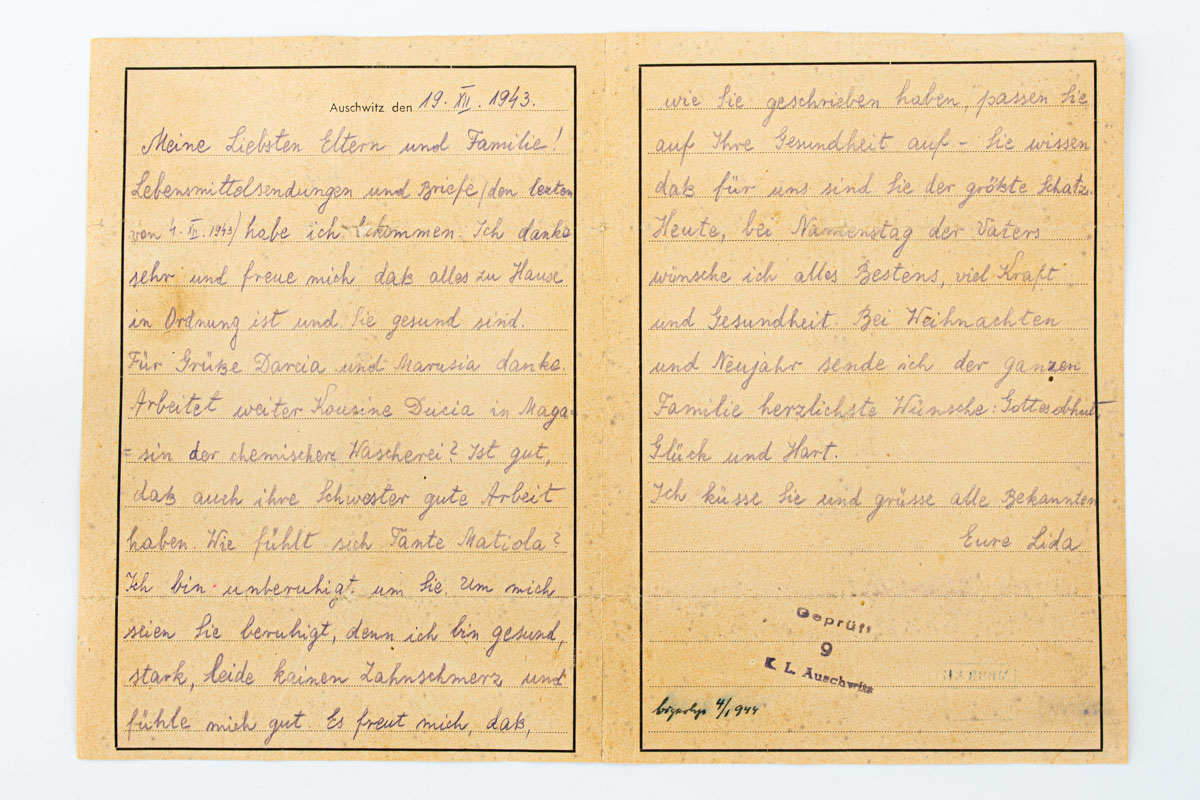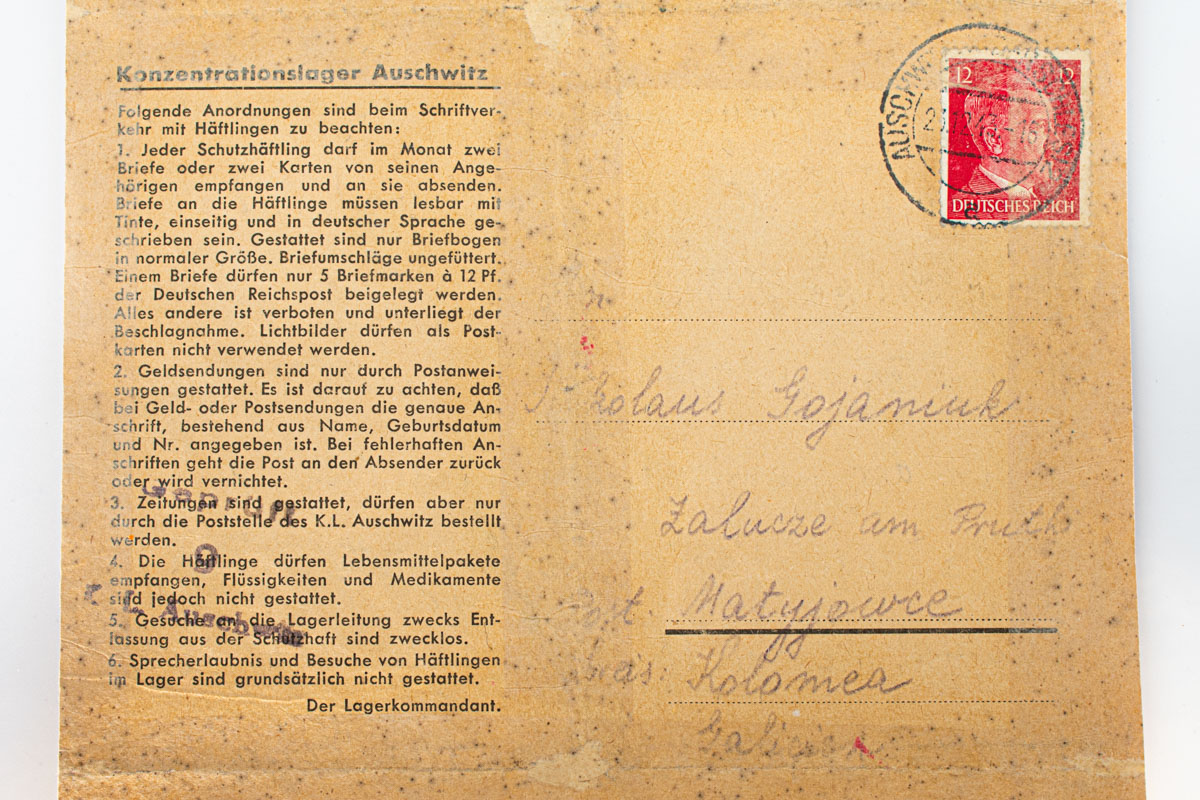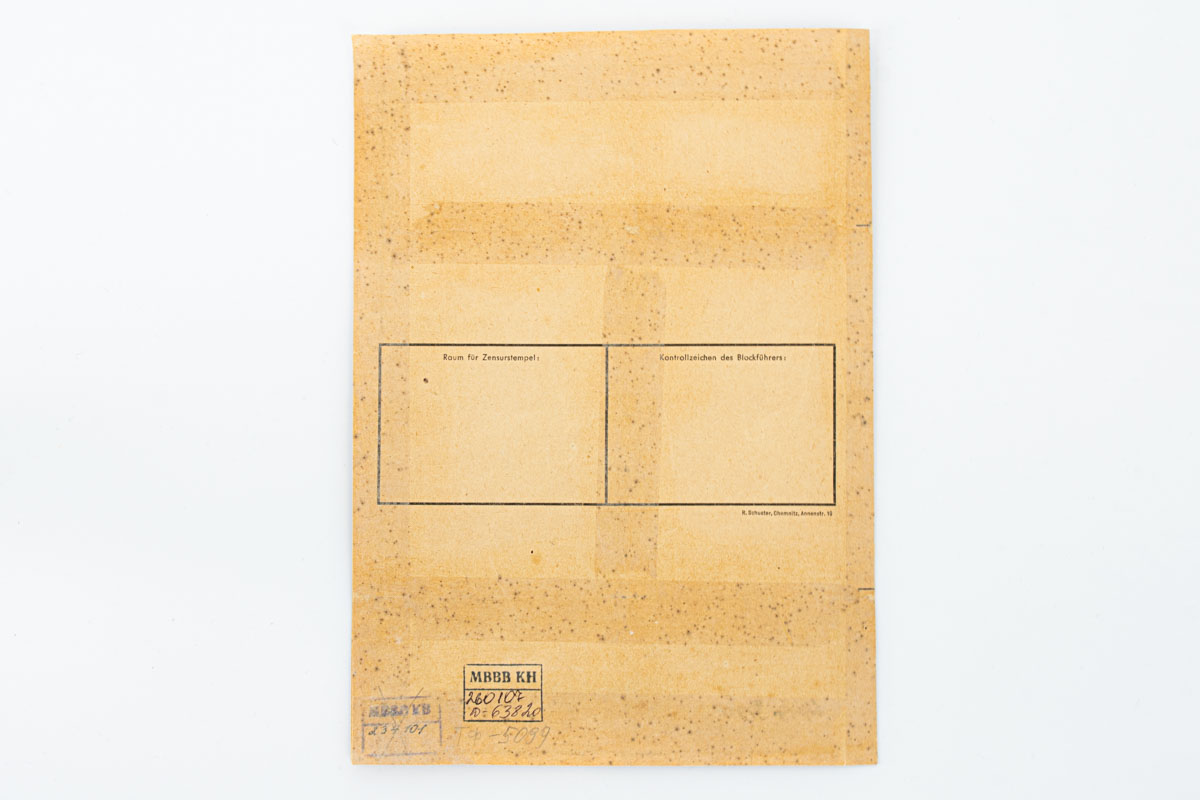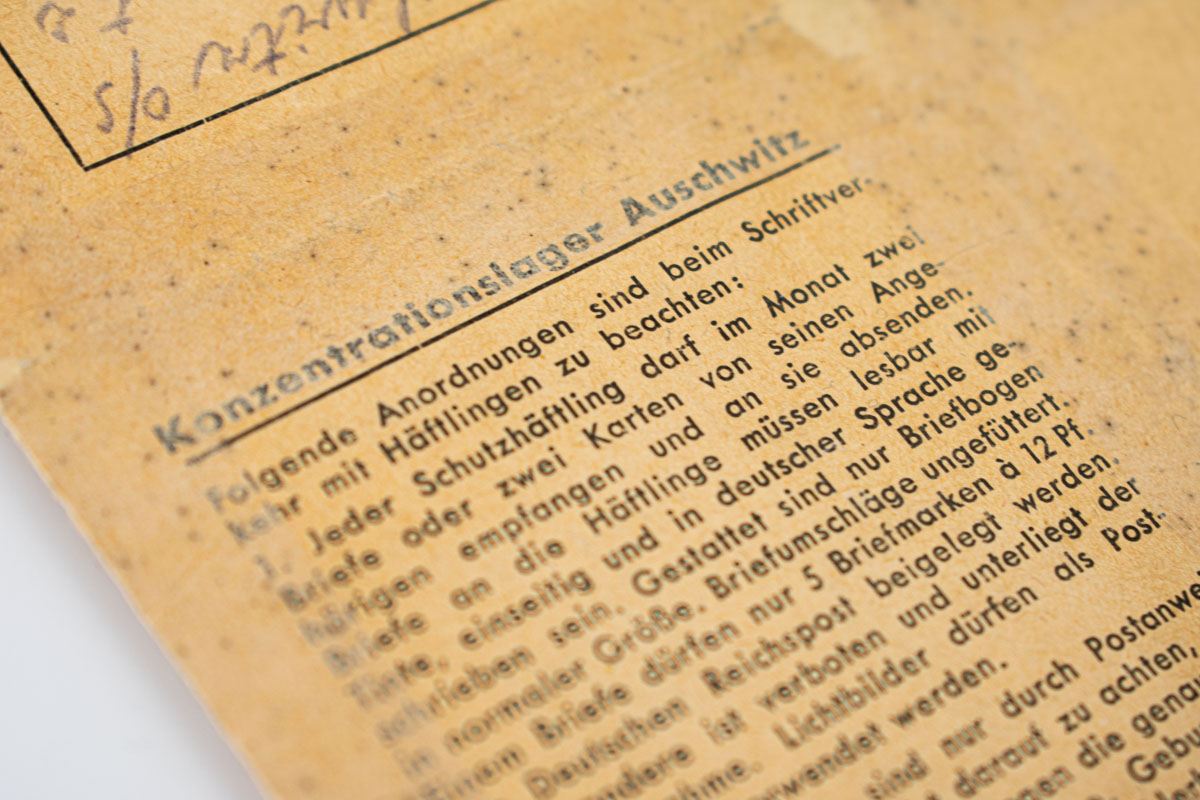The letter is dated December 19, 1943, and addressed to relatives in the Kolomyia region.
Lidiia Hoianiuk was born on October 16, 1921, in the village of Zaluchchia in the Stanislav region (now Ivano-Frankivsk Oblast), into the family of a priest where love for Ukraine was instilled from an early age. Since 1937, she had been a member of the local youth branch of the Organization of Ukrainian Nationalists (OUN). Together with other young patriots, she briefly rejoiced in the newfound freedom of Ukrainians after the Bolsheviks fled in the summer of 1941. However, by February 1942, she was arrested by German special services for anti-Nazi activities. She was imprisoned in Kolomyia, Chortkiv, and Lviv prisons and, in June 1943, deported to the Auschwitz concentration camp (Oświęcim, Poland). There, she was placed in Barrack No. 14 of Camp “B” and, under the number 45988, endured the horrors of the Nazi "death factory."
In the spring of 1944, Lidiia was transferred to the Ravensbrück camp, and later to the town of Gentin, where she worked at a military factory. Assigned number 11125, she and other prisoners spent 12-hour days sorting defective bullets. Exhausted, she contracted malaria but managed to obtain quinine, which saved her life. She returned to her native village of Zaluchchia in June 1945, after the end of the war in Europe.
In 1950, Lidiia’s father, Fr. Mykola, and her sister, Zinoviia, were arrested by the NKVD. Her 68-year-old father was sentenced to 25 years in labor camps, where he died in Mordovia. Her sister was imprisoned for 10 years. Lidiia and her mother were listed for deportation to Siberia, but managed to avoid it. Their family home was looted, and they had to live in the city of Kolomyia in a small house purchased back in the 1930s.
After her return from the Nazi concentration camps, Lidiia Mykolaivna spent nearly her entire life collecting photographs, documents, books, and other materials about her friends from both the anti-Nazi and anti-Soviet underground movements.
She passed away in 2016.
The letter is written on a yellowed pre-printed form, folded in thirds (in the style of a postcard). On the front side are the rules for prisoner correspondence, the address, a postage stamp, and a postmark. Inside is a handwritten message in chemical pencil.





